Kingdom Plantae Scientific name Spirogyra | Family Zygnemataceae Rank Genus | |
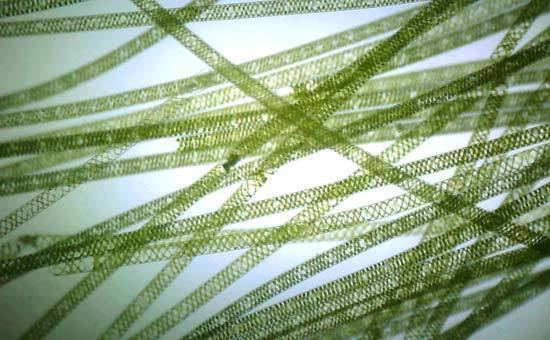 | ||
Similar Globe algae, Chlamydomonas, Green algae, Ulothrix, Euglena | ||
Spirogyra conjugation
Spirogyra (common names include water silk, mermaid's tresses, and blanket weed) is a genus of filamentous charophyte green algae of the order Zygnematales, named for the helical or spiral arrangement of the chloroplasts that is diagnostic of the genus. It is commonly found in freshwater areas, and there are more than 400 species of Spirogyra in the world. Spirogyra measures approximately 10 to 100 μm in width and may grow to several centimeters in length.
Contents
- Spirogyra conjugation
- Study of spirogyra agaricus moss fern pinus and an angiospermic plant
- General characteristics
- Reproduction
- Species
- References
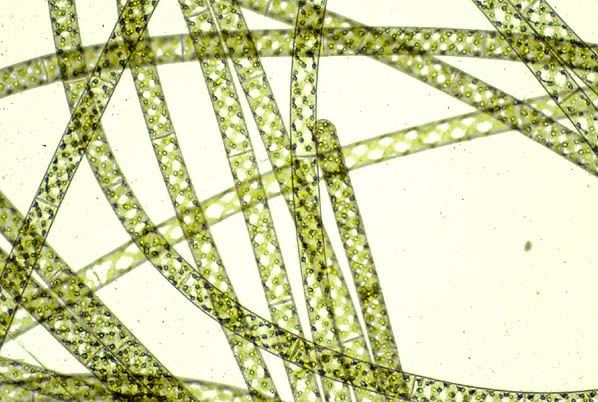
Study of spirogyra agaricus moss fern pinus and an angiospermic plant
General characteristics
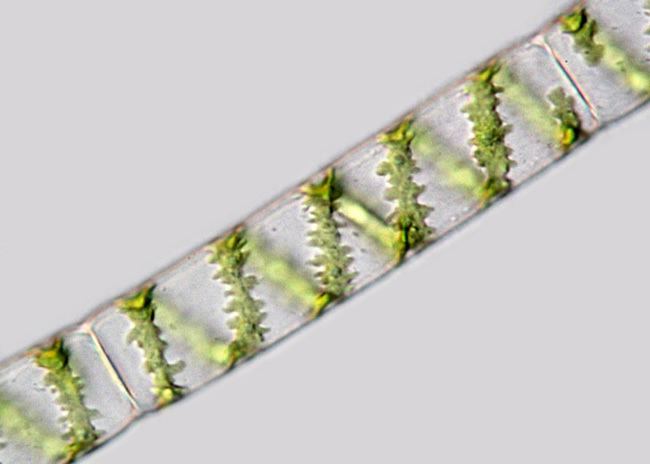
Spirogyra is very common in relatively clean eutrophic water, developing slimy filamentous green masses. In spring Spirogyra grows under water, but when there is enough sunlight and warmth they produce large amounts of oxygen, adhering as bubbles between the tangled filaments. The filamentous masses come to the surface and become visible as slimy green mats. Mougeotia and Zygnema are often found tangled together.
Reproduction
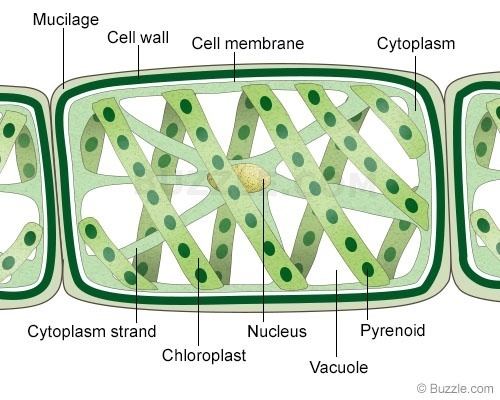
Spirogyra can reproduce both sexually and asexually. In vegetative reproduction, fragmentation takes place, and Spirogyra simply undergoes the intercalary mitosis to form new filaments.
Sexual Reproduction is of two types:
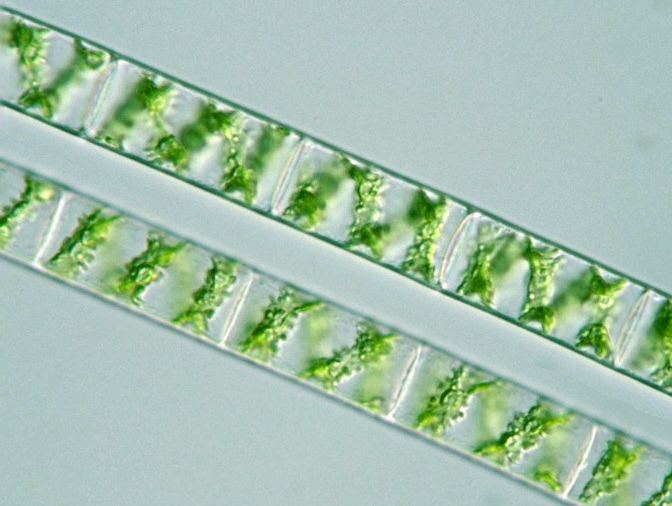
- Scalariform conjugation requires association of two different filaments lined side by side either partially or throughout their length. One cell each from opposite lined filaments emits tubular protuberances known as conjugation tubes, which elongate and fuse, to make a passage called the conjugation canal. The cytoplasm of the cell acting as the male travels through this tube and fuses with the female cytoplasm, and the gametes fuse to form a zygospore.
- In lateral conjugation, gametes are formed in a single filament. Two adjoining cells near the common transverse wall give out protuberances known as conjugation tubes, which further form the conjugation canal upon contact. The male cytoplasm migrates through the conjugation canal, fusing with the female. The rest of the process proceeds as in scalariform conjugation.
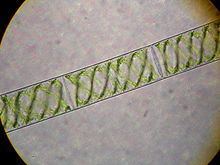
The essential difference is that scalariform conjugation occurs between two filaments and lateral conjugation occurs between two adjacent cells on the same filament.
Species
The following species are currently accepted:
